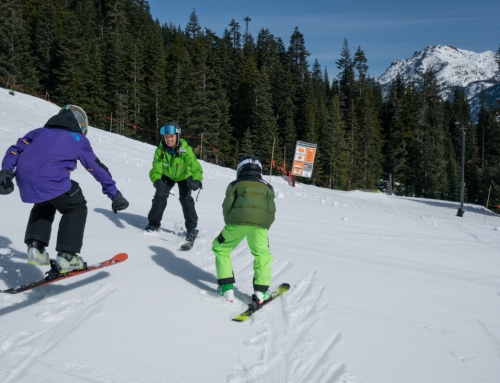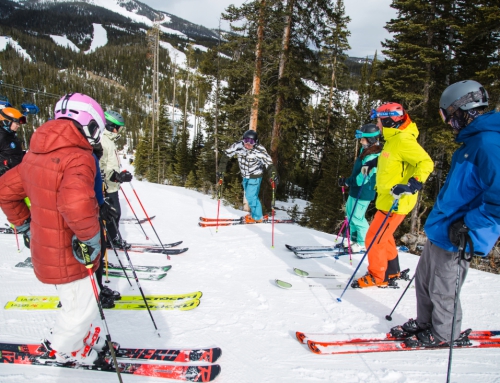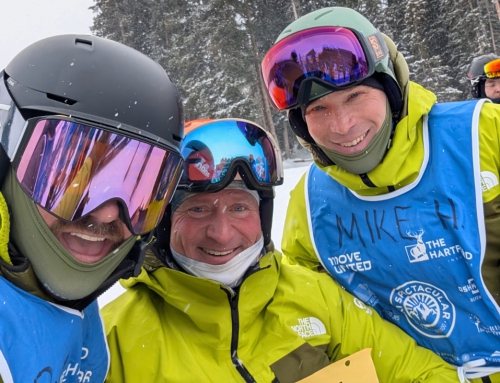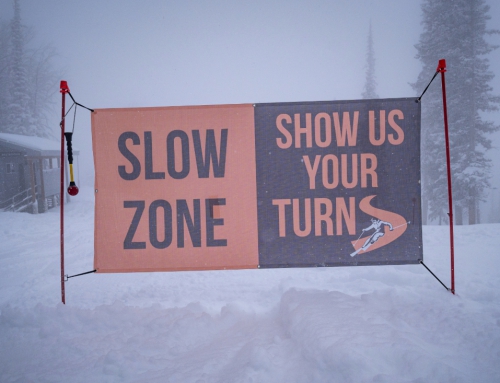Professional Development Plan: National Team Member Brian Smith
Congratulations to the 2021-24 PSIA-AASI National Team for all the work they’ve done promoting, supporting, and assisting with the development of PSIA-AASI education materials, programs, and activities at all levels.
As the team enters its final season, team coaches and members reflect on the work they’ve done for the association, their personal accomplishments, and their professional development plans — including how they think those plans can help you reach your goals this season.
PSIA Alpine Team Member Brian Smith
Q: This team has achieved a lot in a short time — including representing the association at Interski 2023, continued refinement of the Learning Connection, and working toward the target date to align certification processes. What achievements stand out to you?
A: How quickly we as “One Team” came together in the wake of the COVID experience was a testament to the contributions of every individual on the team.
At this year’s Interski, our team’s synchro ski and ride performances were even better than Bulgaria [Interski 2019] due to our training opportunities, which were apparent by the positive comments. The all-women ski performance was an amazing and powerful demonstration to witness as well.
Also, the general concept of “decision-making” and the specific awareness of what influences our decision-making, as well as the impact of using a decision-making process versus not using one. Finally, the refinement of the Performance Guides as a training tool and as a guide to help with unified assessment across all regions. Shared criteria are the foundation for equitable assessment at all levels.
Q: Where do you want to improve this season, especially in regard to the individual people, teaching, and technical skills of the Learning Connection?
A: People skills: To continue helping pros learn how people skills affect the big picture of what we do. Also, the power of self-reflection and how to use it to improve our personal interactions within a group or with an individual.
Teaching skills: Continue finding unique ways to premeditatedly use the physical environment to enhance the student’s experience in their journey toward a shared outcome, so learning is enhanced.
Technical skills: Keep building on and categorizing how and why we manipulate our movements to use the appropriate blend of skills for different skiing situations (tactics with cause and effect).
Q: What other professional goals do you have in terms of teaching and skiing?
A: I would like to help people develop their own mental cues that lead to correct tactics when they are attempting new challenges in an effort to empower them for self-guidance when skiing without assistance.
Also, to continue to have conversations brought on by experiences first. Do, debate, decide. And to continue to set an example by maintaining a growth mindset. For example, whenever I’m about to take a run, I challenge myself by establishing a premeditated goal for ski performance based on speed, pitch, conditions, intended shape, and equipment. After my run, I reflect with others or alone what I did to try and meet the challenge. This usually creates debates, which lead to deductions, which lead to targeted changes as needed. This has been a proven method for me preparing for tryouts and can be done any time while skiing.
However, taking a “free” run without a plan is good too and helps me manage the unexpected.
Q: How can you work with and learn from other instructors on this journey?
A: Much like finding the good in everyone, If I remember to allow space for others to share their thoughts, comments, concerns, or ideas on a particular topic of skiing, I often learn something new. Allowing the space is key.
As team members, we are often involved in the creation of the concepts that are shared nationally and internationally. When we allow ourselves to create space for others to share their interpretation of these concepts, we put ourselves in a unique position to listen and learn in real time as to whether the information provided by the teams is having a positive impact on the snowsports industry.
Q: How can your professional development plan help other instructors work to achieve their goals?
A: My development plan is one that explores each corner of the Learning Connection Model. I look at the LCM graphic in my mind as a flat triangle that represents a weighted scale and all the space in the middle of the triangle is the learning environment. Before going on the hill, I remind myself of which corner I’m naturally weighted in. How does my triangle usually tip? Is it toward the people, teaching, or technical side? Or is it a combination?
When coaching, I try and focus on whether I’m using the full range of my skills to achieve my goals. I try to pay attention to cues that would influence me as to when it’s time to shift my teaching skills in one direction or another within the LCM. There are times we need to tip the scale toward one corner to affect another, but ultimately this is to keep the learning environment level. I often ask people to reflect on their experience of my coaching or teaching and share with me what corner of the LCM I was strongest in and/or weakest in. Did I demonstrate with fluidity the right blend of overall teaching skills that allowed me to positively impact the learning environment? The feedback from others allows me to reflect and make adjustments to my training plan. This helps strengthen my overall performance by targeting the skills that affect one or more of the corners of the LCM. It’s an imagery kind of thing looking at the LCM graphic in this manner, but it can help others balance their development.
Q: What does being a member of the PSIA-AASI community mean to you, and how do you share that sense of belonging with the people you teach, as well as other snow pros?
A: Being a part of PSIA-AASI has meant that I am part of something that brings joy, fun, and excitement to guests and fellow pros. By always being present with my guests and taking ownership in the creation of their learning environment, whereby they can explore and learn, I am setting an example of how the community within PSIA-AASI helps our guests feel the same sense of belonging as we do.
One of the ways I share this sense of belonging is to give testimony as to how I was helped by others in my journey. Sharing passionate, powerful stories of the characters and experiences in my past who helped shape my skills is where the seeds of belonging live. Acknowledging those who came before us and how their contributions (skills concept, centerline, people skills, inclusion) affected you creates an amazing feeling of being part of something larger than ourselves. When we maintain a growth mindset and display a personal drive in our training regiments, where we demonstrate the use of the tools created by ourselves and our peers, we uphold that sense of belonging that bonds us for a lifetime.







